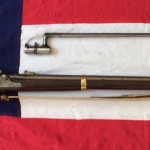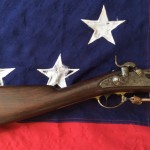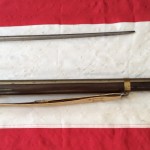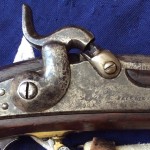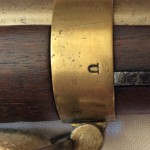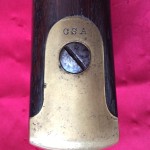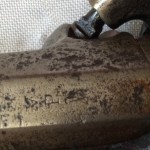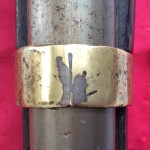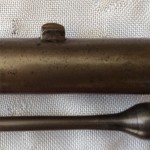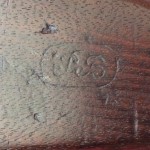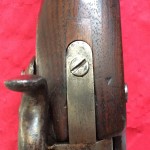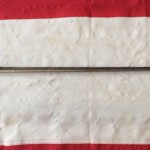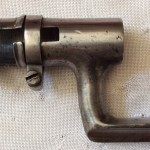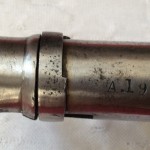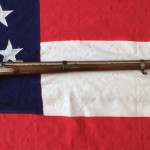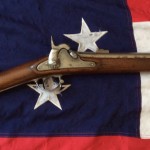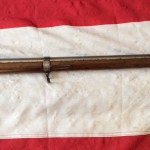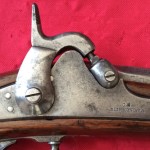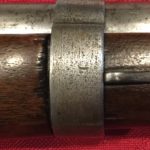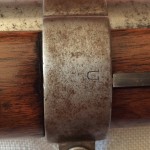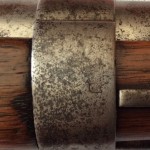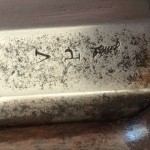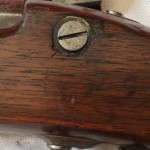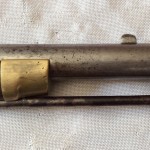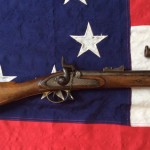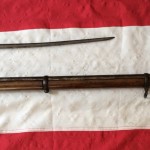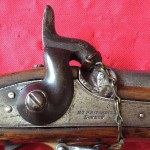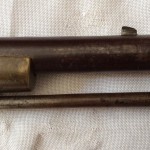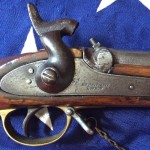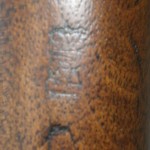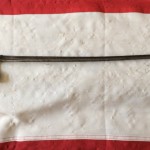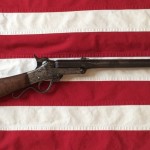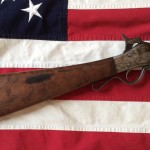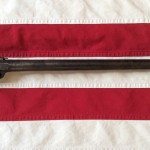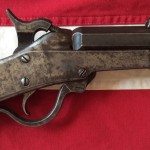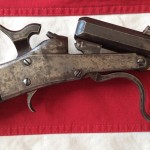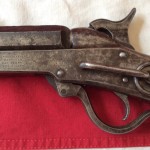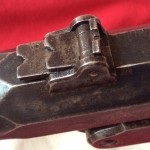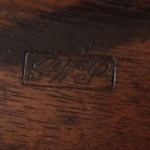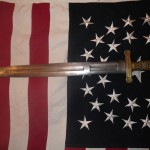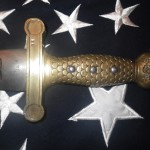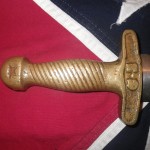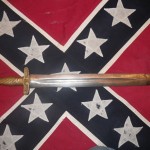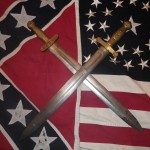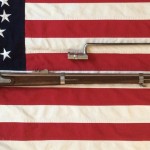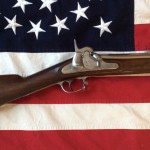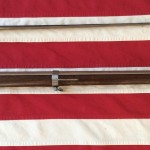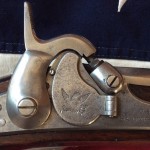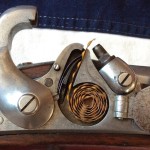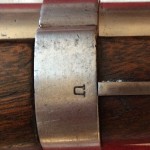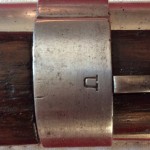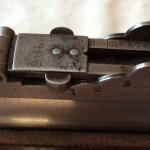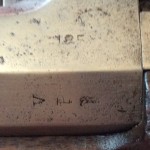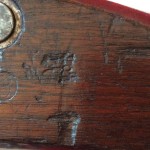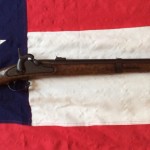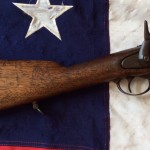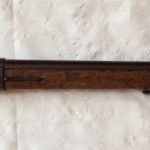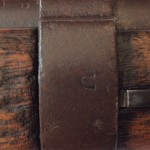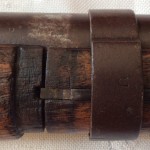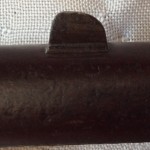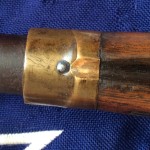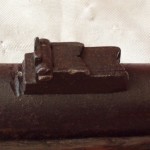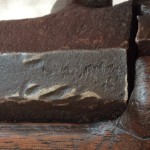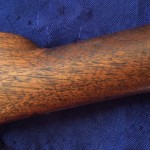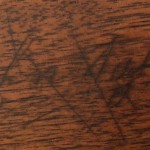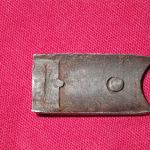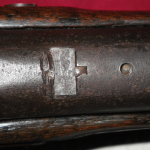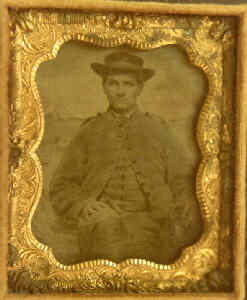- 1863 Fayetteville Rifle, Type VI & Bayonet
- 1863 Fayetteville Rifle, Stock & Lock Plate
- 1863 Fayetteville, Stock & Barrel
- 1863 Fayetteville Rifle Type IV, Lock Plate
- 1863 Fayetteville Rifle, Barrel Band
- 1863 Fayetteville Rifle, Barrel Band and Sling
- 1863 Fayetteville Rifle, Butt Plate
- 1863 Fayetteville Rifle, Proof V P & Eagle
- 1863 Fayetteville Rifle Barrel Band, Casting Flaws
- 1863 Fayetteville Rifle, Front Sight
- 1863 Fayetteville Rifle Cartouche, Philip Burkhart
- 1863 Fayetteville Rifle Type IV, Intitals J.E.W.
- 1863 Fayetteville Rifle, Armory Stock Repair at Barrel Tang
- Fayetteville Rifle Socket Bayonet
- Drake Socket Bayonet, Lock Ring
- Drake Socket Bayonet, Rack # A. 19
My story starts in the spring of 2013 at the Gettysburg Civil War show; I was there to purchase a Southern weapon specifically a Richmond short rifle but I never found the one that worked for my collection so I wound up buying a wonderful Confederate D handle Bowie knife that was made from a rasp/file, which I will write about in the near future.
While I was walking around looking at all the neat Civil War artifacts on what must have been 200 tables I came across a gentlemen who was selling off his collection of Confederate Weapons. He is a gun collector whose interest has changed from Confederate to WWII German items. He must have had about 6 or 7 Confederate rifles but the one that stood out to me was a 1863 Fayetteville Type IV rifle with a Fayetteville Bayonet and linen sling that was priced at $14.500.00.
Unlike the dealers that you meet at the shows who are generally willing to talk and negotiate as much as possible to secure the sale this gentlemen was there to sell his collection but wasn’t very willing to negotiate. He knew what the items were worth and he was going to sell them for that price.
After passing his table 3 or 4 times I approached him to inquire about the Fayetteville we exchanged some small talk and then I made him a fair cash offer on the Fayetteville. My offer was lower the then asking price which he did not except but he made me a counter offer which I didn’t except. In the end he was firm at $11,000.00 which I wasn’t willing to do.
Over the next 5 or 6 months I struggled with my decision not to except his counter offer of $11,000.00 for the rifle and worst of all I didn’t get his contact information (so I didn’t have a name, email, or phone # to negotiate after the show was over). All my research suggested the gun was indeed worth the asking price especially with the Bayonet and sling, so needless to say I was disappointed with myself that I didn’t seize the opportunity and close the deal. I thought I would never have that chance again to purchase a complete stand of rifle at that price.
So fast forward to the Fall of 2013 at the Gettysburg show and all I can think about is the Fayetteville that I’d seen 6 months before. I walked up and down the aisles looking at all the neat Southern pieces, and there were some really nice items for sale so I was certain I was coming home with a new piece for my collection. I had almost completed my first pass of all the tables, disappointed that I hadn’t come across the gentleman with the Fayetteville then low and behold there it is the Fayetteville in all its glory.
I scurry over to the table and introduce myself as the guy who made the cash offer for the rifle at the last Gettysburg show, he remembers my offer and immediately engages with me. After talking with him for a while it seems as though we both want to strike a deal. However the deal that is to be struck is a cash deal and I don’t have the cash with me. So we exchange info. and meet each other a week after the show and the deal was done.
My new Fayetteville is an 1863 Type IV model that is in very good condition unfortunately someone over the years removed the brown finish on the barrel and polished the brass hardware but it must have been done decades ago because the patina is coming back. The stock is in extremely good condition and the action on the lock plate and trigger mechanism is crisp. The left side of the rifle has old world script initials J.E.W. I believe that these rifles were only issued to North Carolinians from certain Co. I will try and research the soldier who carried this weapon during the Civil War.
The Fayetteville Armory, in Fayetteville, North Carolina Altered many seized captured flintlock pistols and long arms. After Stonewall Jacksons raid of the Harpers Ferry Arsenal in 1861 many of the machines to manufacture rifles were taken to Fayetteville North Carolina, which was one Confederate States Arsenals during the war, another being the Richmond Armory.
Many of the experienced workers from Harpers Ferry went to Fayetteville to help set up the machines and to make the rifles that were so needed for the Southern cause. This didn’t stand well with the Government of Virginia who felt by default that the experienced workers from Harpers Ferry should build rifles for the state of Virginia since after all Harpers Ferry was in Virginia at the time.
Anyway I can drone on but you probably won’t listen, haha.
There were 4 types of Fayetteville Rifle made throughout the war.
1. Type I; Early production 1861-1862 was made from captured Harpers Ferry parts. The Lock plate has a high hump (like the early Richmond’s) shape. Lock marks are C.S.A. Fayetteville, N.C. some have brass patch box most do not have C.S.A. on the butt plate.
2. Type II; Low hump and marked with eagle motif, C.S.A. Fayetteville, forward of the hammer. Date of 1862 behind the hammer. Many of the parts are captures Harpers Ferry parts, most brass butt plates are stamped C.S.A.
3. Type III; Lock plate redesign to the contour of the U.S. Model 1861 musket. Markings on rifle are like Type II; however the hammer has a distinctive S contour that is recognizable from across the room and there is a lug for a saber bayonet added to the right side of the muzzle.
4. Type IV; Similar to type III with the exception of slight variance in the eagle die stamp. Accepts a socket bayonet with the front sight acting as a bayonet lug. Lock markings are 1863, 64, 65.
Between 8000 and 9000 rifles of all types were made throughout the war, but most about 5000 were of Type IV. The Barrel is 33”long secured by 2 barrel bands and the hardware on the rifle is brass, many consider this to be the finest quality rifle the South made and it may be the prettiest.
The Bayonet is not an original Fayetteville it is a Drake Bayonet which is almost exact to the Fayetteville made ones. It has an overall length of 22 ½” with the blade being 20 ¼” from behind the neck to the end of the blade. The sleeve on the socket is stamped A.19, probably having to do with a rack # or Co. and infantry #.

